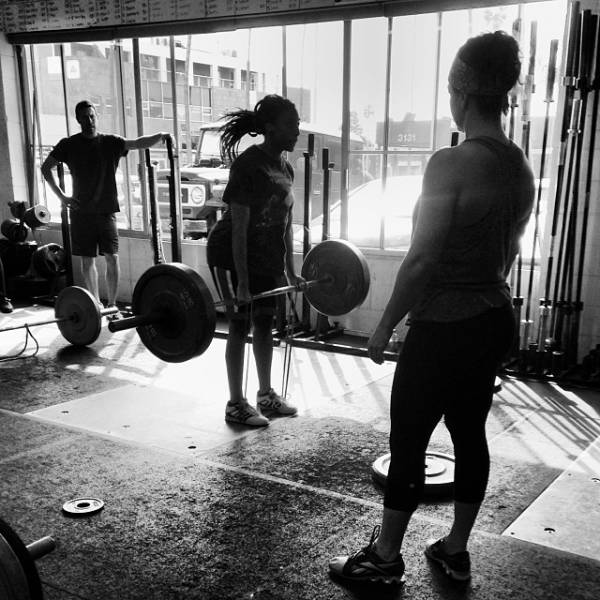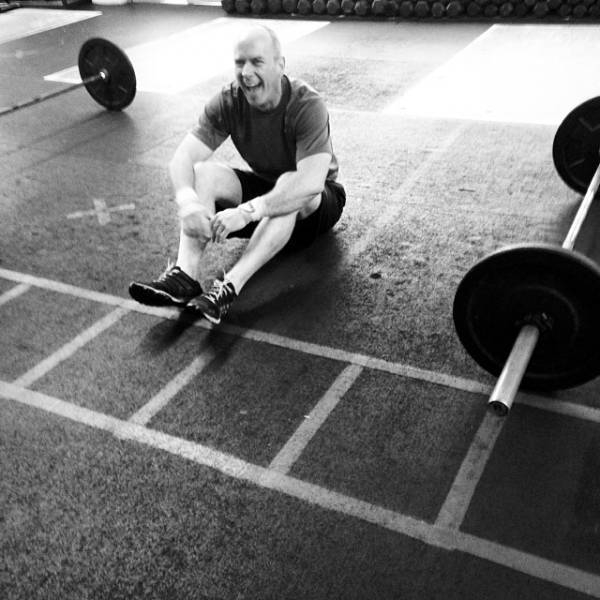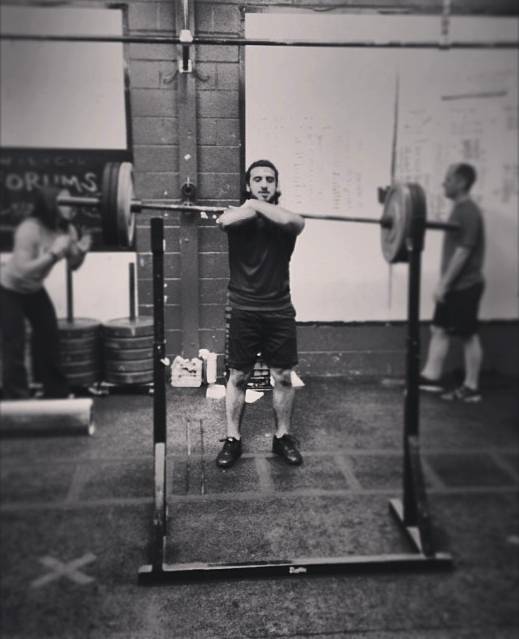I love learning. I think it’s part of the reason I love lifting – the fact that it is a lifetime journey of learning and strength. I love learning from my own experiences, and sharing with others. I also love learning from others and sharing it with other others. Collectively, this forms the basis of my coaching. And guess what? I love that, too.
I’ve combined all of these things in this article. It’s one I’ve been meaning to write for a long time. And there will be more like this. But for now, here are 25 “rules of strength training” I’ve learned on the rocky road to being better.
The Rules of Strength Training
1. Approach different lifts differently. Some lifts are better to approach aggressively, and some and better to approach less so. I find I lift best when I go at squats aggressively and deadlifts with a calmer and more focused mind-set. Find what works for you with each lift.
2. Training the lift is not the only way to improve on it. To me this is like the “do you play sports to get fit, or get fit to play sports?” question. If you use strength work as part of a broad spectrum of fitness, then you’re probably okay just training the main lifts. But if the main lifts are your focus, then you need to spend time finding ways to improve these other than pummelling yourself into the ground with the full lifts themselves.
3. Twenty rep squats get you strong. It doesn’t need to be complicated. Do them once a week, and add 5kg the next week. Repeat.
4. Warming up is important. Although you might be able to do the work without warming up, this will catch up with you.
5. Footwork is key, particularly in the Olympic lifts. Analyze your footwork, and if you find you could be pulling, jumping, landing, or squatting from a better position, then make the adjustment. It can be hard to get your body to make this change, especially in the Olympic lifts where you are dynamically changing from position to position. I have found a good way to reset your footwork pattern is to strip it down to the bare essentials and do footwork drills without the bar. Include these in your warm up every day. Add complexity and speed as you improve to build it back into your lifts.
6. Intensity > Volume. Of course, there are exceptions to this, but stop thinking that you are one. Intensity is greater than volume. More is not more.
7. It’s all in the hips. The ability to generate explosive power through the hips is both fundamental and transferrable to, well, everything. Prioritize the hips in your training and movement. And if everything is a mess, fix the hips first.
 8. On the heels doesn’t mean on the heels. It means have the majority of weight on your heels, not all of it. It’s important to maintain a solid base of support by having your whole foot on the floor. You can think about keeping your big toe on the floor while keeping your weight largely on your heels.
8. On the heels doesn’t mean on the heels. It means have the majority of weight on your heels, not all of it. It’s important to maintain a solid base of support by having your whole foot on the floor. You can think about keeping your big toe on the floor while keeping your weight largely on your heels.
9. Save 1RMs for competition. Establish the difference between training and testing. Save testing for the platform or other situations where it has a purpose. At all other times, train and get stronger.
10. Longevity is the most important thing. Even more important than scores, times, weights, and competitions? Yup, because if you’re injured you’re not going to be putting any score up at all.
11. One full rest day a week is important. Active rest is good and useful. But constantly filling your rest days with extra activities can leave you short of intensity when it comes to the important stuff.
12. Strongman makes you strong. Whether it’s truck pulls, yoke carries, farmer’s walks, or anything else, this stuff gets you all-around strong in a way that needs to be experienced. And what’s more it is fun, too. Get some.
13. Deadlifting frequently isn’t a bad thing. Yes, your deadlift will probably go up or at least maintain through a decent strength program. And yes, deadlifting can be pretty brutal on the body. But if you are serious about your deadlift (and why wouldn’t you be?), then you need to pull heavy weights regularly. Find some deadlift variants that work for you and train them suitably.
 14. Do something fun after competition day. You’ve been working for weeks, months, or maybe years for this. So give yourself a break and do something fun and different in the gym for a session, or a few sessions, after your competition. Whether it’s strongman, bodybuilding, or max height box jumps, now is a great time to play. It also gives your body a bit of a change and your mind a chance to regroup.
14. Do something fun after competition day. You’ve been working for weeks, months, or maybe years for this. So give yourself a break and do something fun and different in the gym for a session, or a few sessions, after your competition. Whether it’s strongman, bodybuilding, or max height box jumps, now is a great time to play. It also gives your body a bit of a change and your mind a chance to regroup.
15. You need to lift above 90% on a regular basis. This is where the magic happens.
16. But keep the total reps below double figures. This is where it starts to fall apart.
17. Write down everything. I’ve found that nothing beats a good old notebook and pen. You can use it to write all the notes you want. And it’s important that you record detail, as an ugly set of three grinding, borderline-depth squats is not the same as a beautiful, deep, fast set of three. It’s true there are plenty of websites and apps out there offering workout logging with all sorts of bells and whistles. And if you want to use them, fine. But consider this. A notebook never runs out of charge. It is never offline. It is fully customisable. I would pay good money for an app like that!
18. Sometimes, it’s just habit. Sometimes, there is no technical reason why you or your clients are making a particular error in your lifts. So don’t over-analyze or over-coach. You just need to pay attention, correct, and repeat.
19. The best training program is one you’ll stick to. And, for that matter, get started on. That awesome training program you’ve read about is worth nothing to you if you’re not doing it – or if you are doing it but are unable to keep going with it as intended. Work with a training program you can stick to. This might not be the one that will get you the strongest, fittest, or fastest in theory, but consistency will outweigh all of that if you can stick to the practice.
20. Say less. As a coach and student of lifting, less is more.
 21. Always finish on a good rep. Sometimes this might mean taking some weight off and hitting a back-off set of three. Three sets of three at 80% is a protocol I use regularly to add in a little extra work and finish on solid and strong lifts.
21. Always finish on a good rep. Sometimes this might mean taking some weight off and hitting a back-off set of three. Three sets of three at 80% is a protocol I use regularly to add in a little extra work and finish on solid and strong lifts.
22. Everything is connected. The fact that my back hurts because of my hips. The fact that everything is a plank. And the fact that heavy squats make my pull ups better.
23. Have a goal for the session. Having a goal for the session, whether self-prescribed or given by your coach, can help to focus the mind and maintain a positive outlook on training. This is particularly useful in a sport like weightlifting, where if you change one thing for the better, often something else will change for the worse and you can end up beating yourself up about it. If you accomplished the goal for the session, you won.
24. Spend time in the positions you want to improve. Whether it’s the bottom of a squat, the receive position of a split jerk, or the top of a deadlift. If you want to improve in these positions, spend time in them. Static holds are perfect for this.
25. The mind is the divider. The difference between making a limit lift or not, between beating your previous record or not, between getting under the bar or not, and between being one of the greats or not, is in the mind. Train it.
All of these, at one time or another, have been light bulb moments for me. I hope that at least one of them has flicked a switch for you. Post your thoughts and experiences to the comments below.
Photos courtesy of CrossFit LA.






